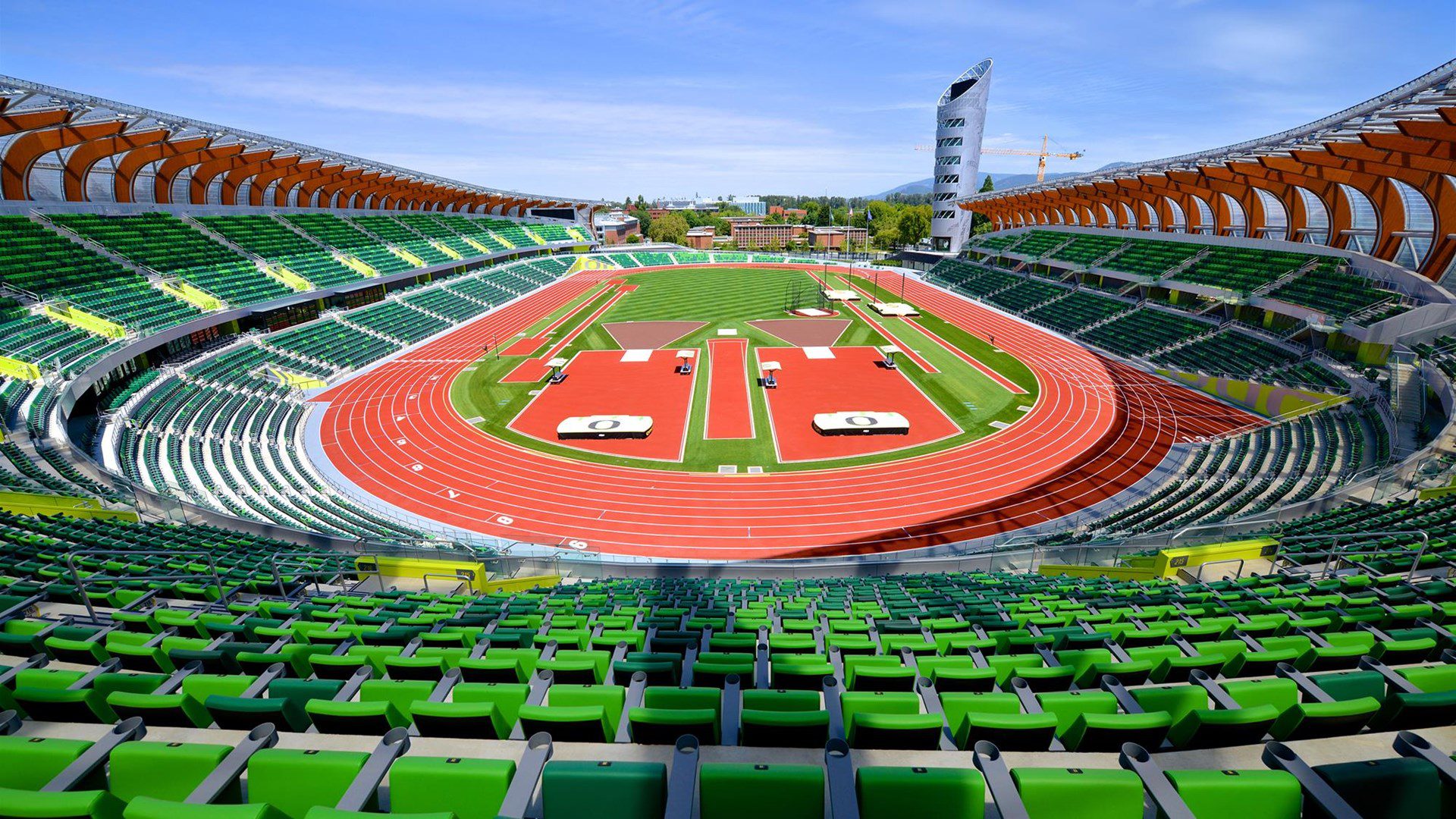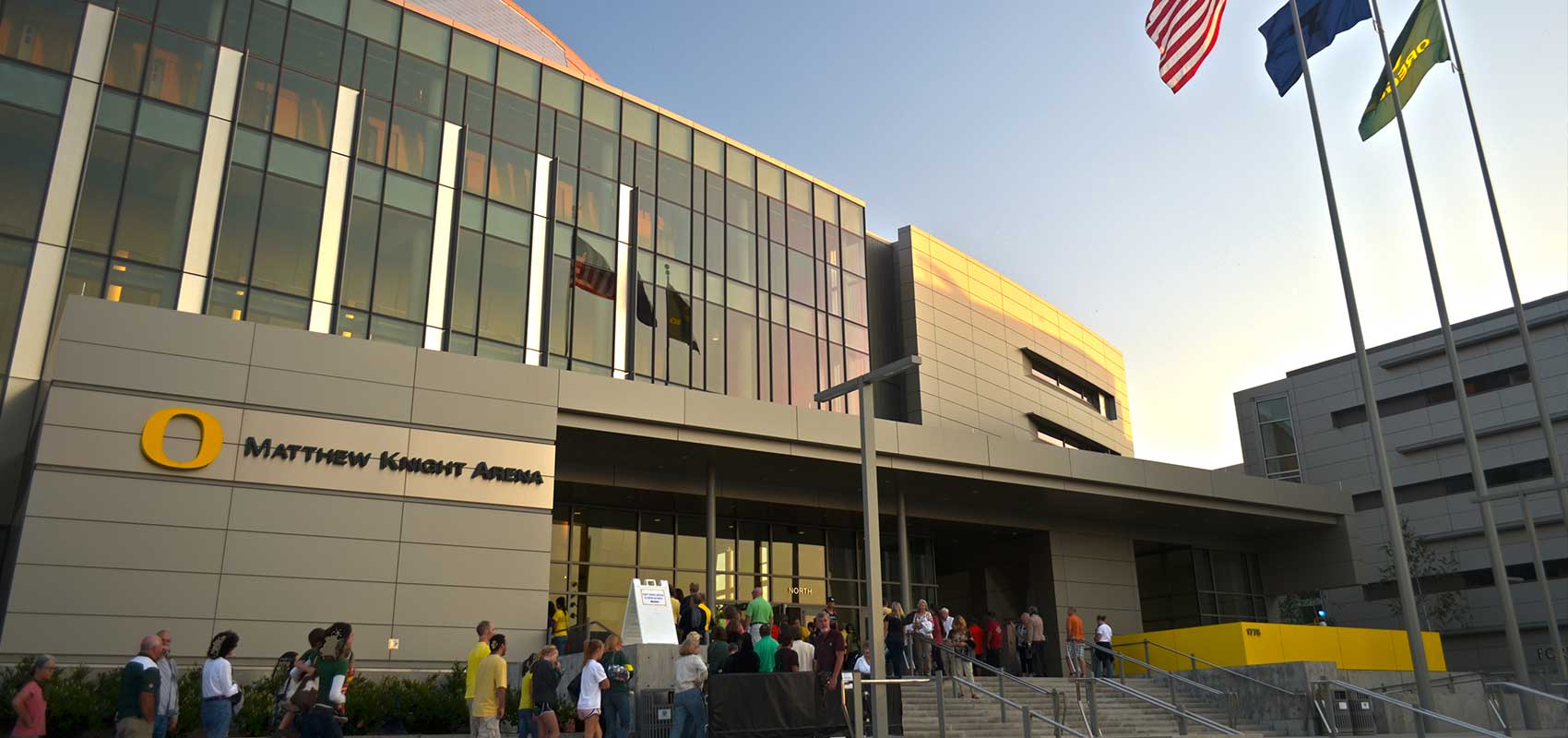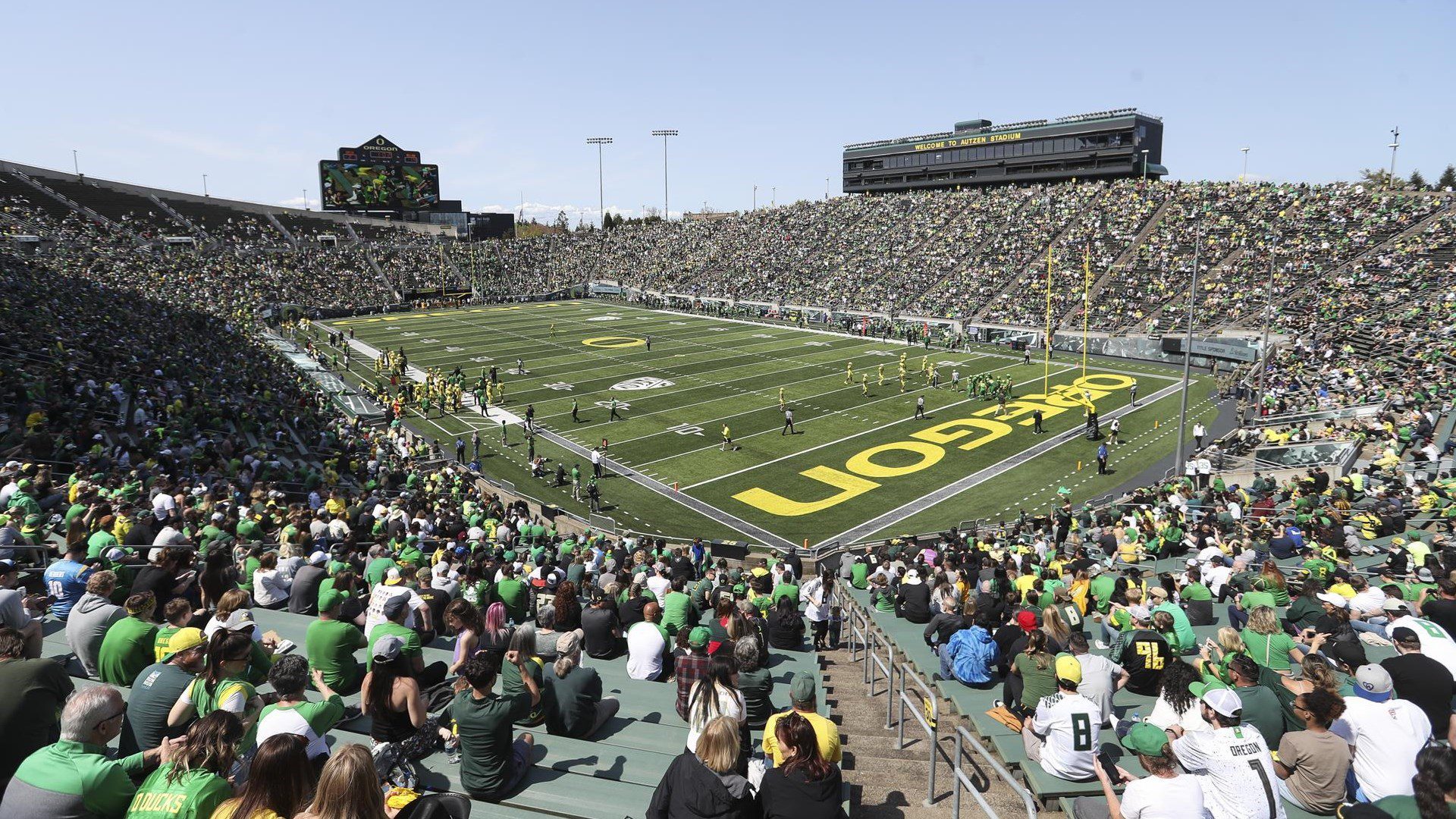The University of Oregon (UO) has a long history of being green — not just because green is a school color. The school started a recycling program in 1971, and UO students launched a zero-waste campaign in 1991. The university also developed a comprehensive environmental policy in 1997, and Oregon’s Athletic Department has been a crucial player in the university’s sustainability program.
“Oregon Athletics is committed to playing a leadership role in the university’s greening efforts,” asserted Athletics Director Rob Mullens. In 2010, Oregon’s Athletic Department formed a Sustainability Committee to “foster awareness and minimize our environmental impact” and was among Green Sports Alliance’s earliest intercollegiate athletic members when it joined in 2012.

Oregon’s football stadium, Autzen, started recycling paper, cardboard, and beverage containers in 2004. UO installed “Liquid Beverage Recovery Containers” inside the stadium, allowing fans to empty their bottles, cups, and cans before discarding them into recycling bins. In 2011, a three-bin collection system — recycling, composting, and landfill — was introduced to simplify the process for fans. It helped boost the number of containers collected, from 43,000 in 2011 to 80,000 in 2012. Likewise, the composting and recycling rate increased from 20% to 60%.
UO also developed a recycling program for those who tailgate indoors and outdoors. On game days, the Moshofsky Sports Center transforms into an “indoor tailgating experience,” complete with the three-bin collection containers. Meanwhile, out in the parking lots, Oregon’s Green Team members distribute color-coded bags, which tailgaters use to deposit their empty glass, aluminum, and plastic beverage containers. The volunteers later retrieve the bags and help in the sorting process. The program’s success was shown in the jump in the stadium’s diversion rate from 19% in 2008 to 48% in 2012.
Autzen Stadium’s food vendors are involved in the recycling campaign, too. The cooking oil used at concession stands gets recycled, turned into biodiesel, and used as low-carbon diesel fuel. Oregon got food vendors and concessionaires to replace their serviceware with compostable materials.
The Oregon Ducks’ biggest football game every season is the “civil war” with intrastate rival Oregon State. The 2015 game, played at Autzen Stadium, achieved historic ecological significance when it became the first collegiate football game to receive a gold certification from the Council for Responsible Sports (CRS).
UO earned this accolade for its impressive achievements in CRS’ five standards: planning and communications, procurement, access and equity, resource management, and community legacy.
Autzen Stadium’s CRS gold certification follows other significant sustainability achievements made by UO athletic facilities, including that of Hayward Field, the university’s historic track and field stadium. The 2008 U.S. Olympic Track & Field Trials received the International Olympic Committee’s Sport and Environment Award, and the 2012 event received a CRS gold certification.
“At the 2008 and 2012 Olympic Trials for track and field, we moved our community’s — and I think the U.S. Olympic Committee’s — expectations on sustainability from an event check-box to an approach that was integrated throughout all aspects of the event, from operations, marketing, and fan education and engagement to the athlete experience,” said Ethan Nelson, the sustainability committee chair for the 2012 Trials.
At these events, an integrated energy plan decreased the need for mobile generators, helping lower overall energy. Recycling aluminum cans, paper products, and plastic contributed to a 68% waste reduction rate in 2008 and 78% in 2012. UO reclaimed more than 79% of the plywood after the Trials. Similarly, the university used salvaged materials in Hayward Field’s recent renovation.

The Matthew Knight Arena, the current home to Oregon’s basketball, volleyball, and gymnastic teams, opened in 2011 and delivered OU Athletics its first Gold Leadership in Energy and Environmental Design certification from the U.S. Green Building Council. The arena earned this honor for its energy efficiency, water conservation, and eco-friendly building strategy.
Oregon Athletic Department’s sustainability initiative has had projects that touch community members and other living creatures. Money generated from bottle recycling has gone to support high school band programs, and volunteer recycling duty has been a fundraiser for local groups. The university also installed nesting platforms on three 100-ft. lighting poles — one each at Autzen Stadium, Hayward Field, and the football practice fields — for osprey hawks who return each spring to the exact locations to mate.
“Oregon Athletics strives to reflect long-held values of the university, community, and state,” stated former UO associate athletics department director for facilities Bob Beals. “We believe that intercollegiate athletics can help set examples for more sustainable practices for university students and the community.





